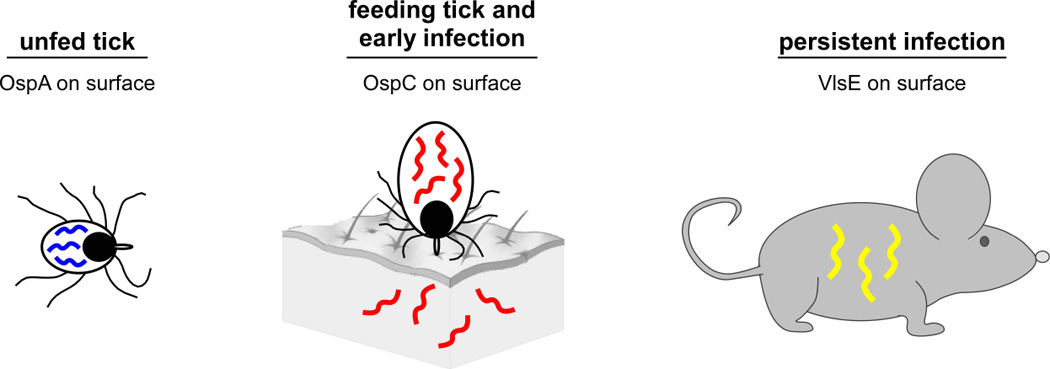Fig. 1.

B. burgdorferi outer surface proteins are differentially regulated in response to host conditions. Spirochetes remodel their outer surface in different host environments, represented above by different colors. In the unfed tick, B. burgdorferi (represented in blue) produce a variety of proteins, such as OspA, to persist within the tick midgut for extended periods of time. Once a tick has attached to a vertebrate host, B. burgdorferi (now represented in red) expresses other proteins (e.g. OspC) in preparation for transmission to the new host. During infection of the mammalian host, B. burgdorferi (colored in yellow) expresses a variety of other proteins (including VlsE), presumably to survive attack by the host immune system, disseminate to distant sites within the host, and acquire specific nutrients. This figure shows representative proteins and is not meant to be a comprehensive list.
